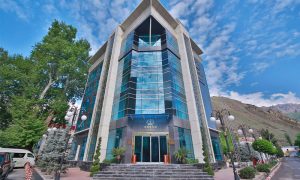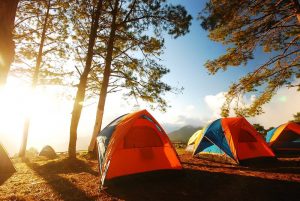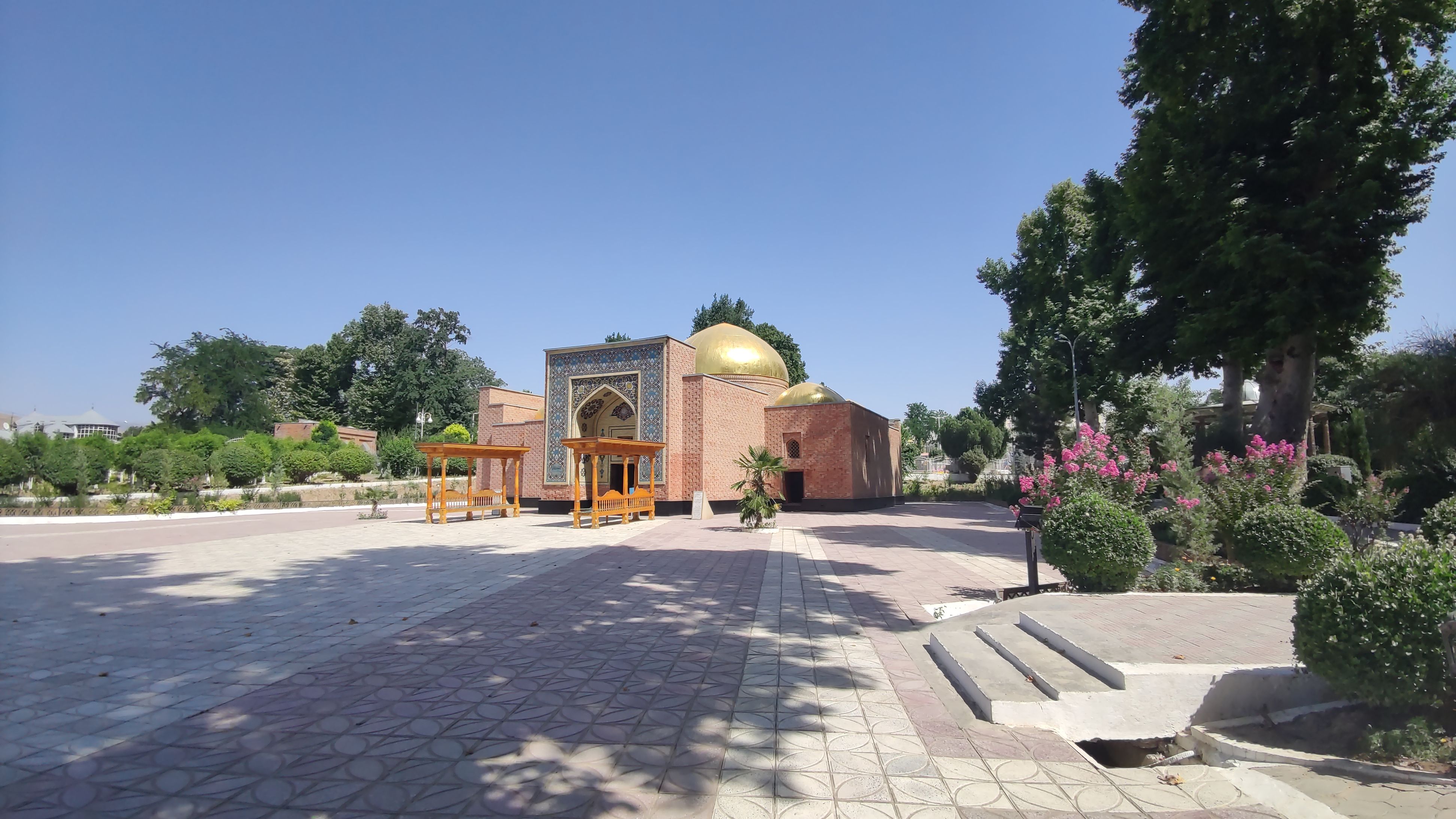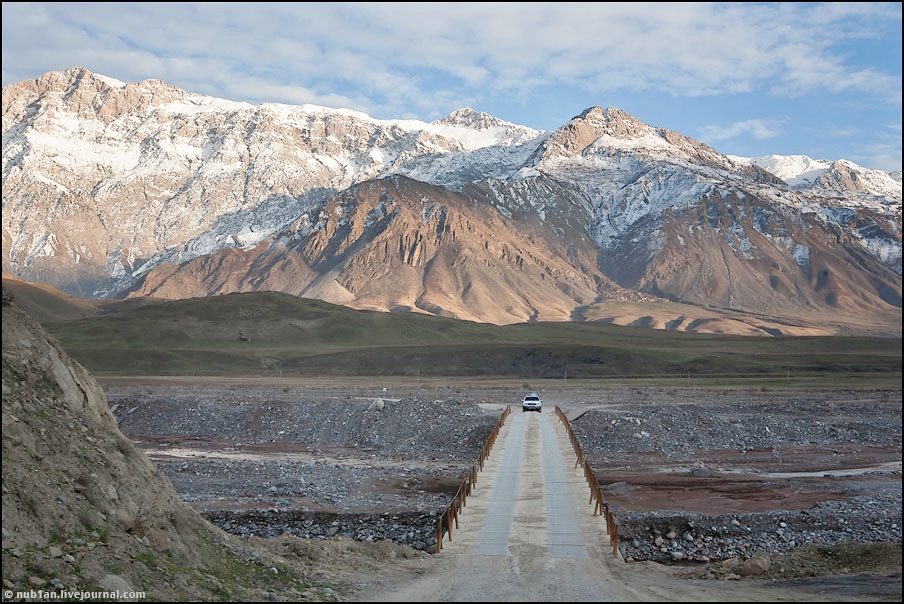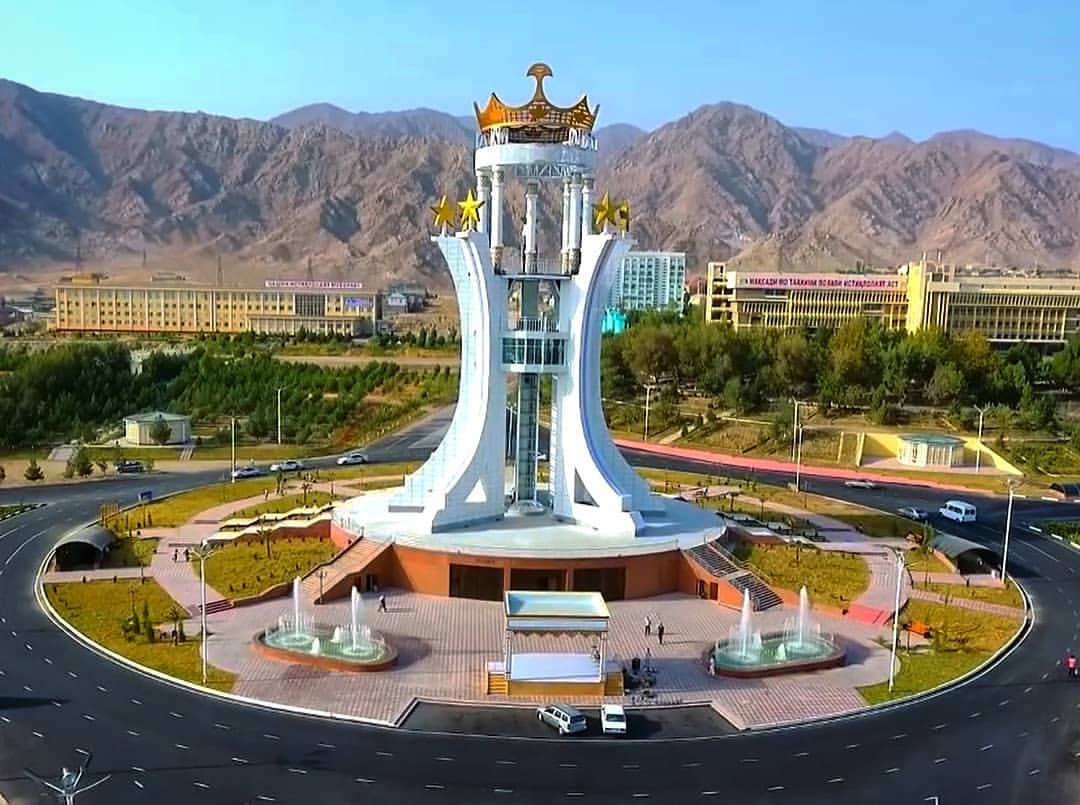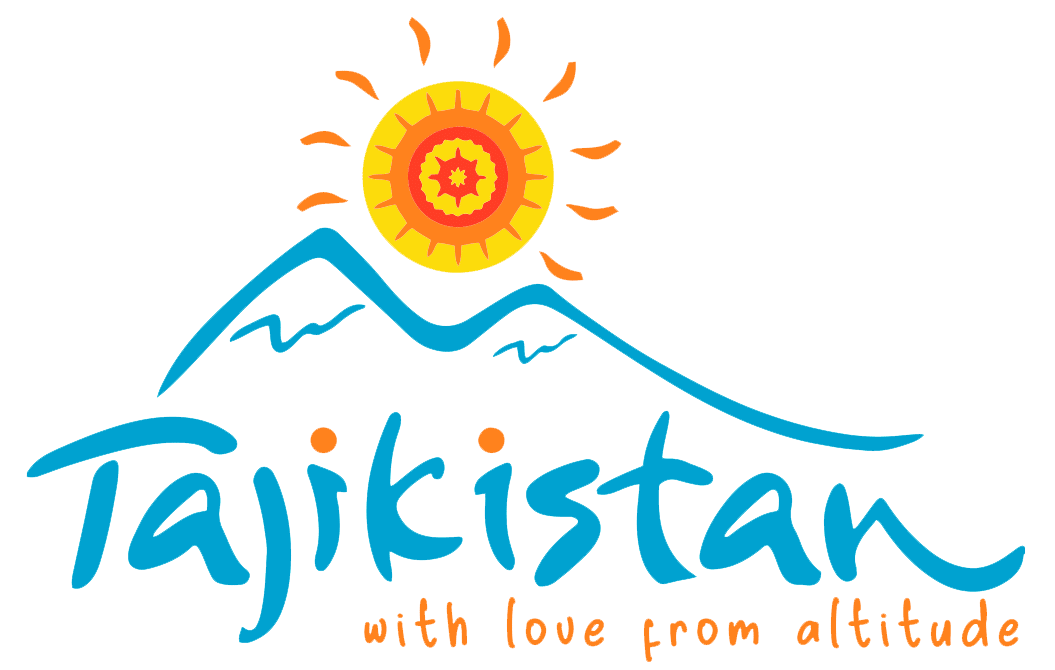The Aqtash-Karakul junction is located at 95 km of the Murghob-Karakul highway and connects the Bartang valley with the Murghob foothills. At this intersection, tourists can enjoy the beautiful scenery of the southern shore of Lake Qarakul (Black Lake in Turkish). The junction is located 25 km from the village of Qarakul. The lake is the largest natural reservoir of Tajikistan that exist at the altitude of 3900m of sea level. It is 33km long and 23km wide. The big island -ridge, extended from north shore to the south, divides the lake into two parts: shallow-eastern and deep water -western. Its deepest point is in the western part which is 230 m. Up to the end of XIX century, the north part of the island was linked with shore through the narrow isthmus. Now this isthmus has disappeared. Few small rivers such as Qarajilga, Qaraart, and Muzkul fall into the lake but none of them flows out of this salty lake. An interesting feature of Qarakul is that the shores of the lake lie on ice. The ice is even rooted at the depth of the lake.

Qarakul is the most deserted part of the Pamir. There is the least precipitation, nearly twenty millimetres per annum. The water level in the lake is not dark (as its name says) but ultramarine, blue, greenish, depending on sun’s light refraction that falls on the surface of the water. The village of Qarakul is located on the eastern shore of the High Pamir Road. The population of this village are Kyrgyz and mainly engaged in animal husbandry. A well-known Markansu valley is located few kilometres away from the lake. The meaning of the word Markansu is translated as the ‘valley of a whirlwind’, others as ‘valley of death’. More precisely it would be ‘dead water’. It is there that well-known archaeological site ‘Oshkhona’ of Stone Age (VIII century B.C.) exist.
Nature of the Lake
The nature in Qarakul and its surroundings area is harsh and sever but at the same time it is beautiful with its primordial, feature. The water of the Qarakul lake is bitter and salty, and few fishes can be found there, which are usually eaten by the birds. The shores of the lake are high altitude deserts. Only in a few places near the water, there is a sedge, buckwheat, and some variety of glassworts.There are different ecosystems such as marsh, peat bogs, water meadows, pebbly beaches, and sands around the lake that provide conditions for many types of birds live in that area.

Visitors can watch bar-headed geese, Tibetan sand grouse, yellow-billed chough, Caucasian great rose finch, white-winged snow finch, ruddy shelduck, Himalayan vulture and saker falcon on shores of the lake. Snow leopards and Marco Polo sheep can be also seen nearby the lake. The lake is frozen for five months from December till April. The high altitude and the cold, arid conditions of the Pamir make the climate of the nature extreme. The average winter temperatures are around -20 degrees but can get down to -45 degrees.
Gallery



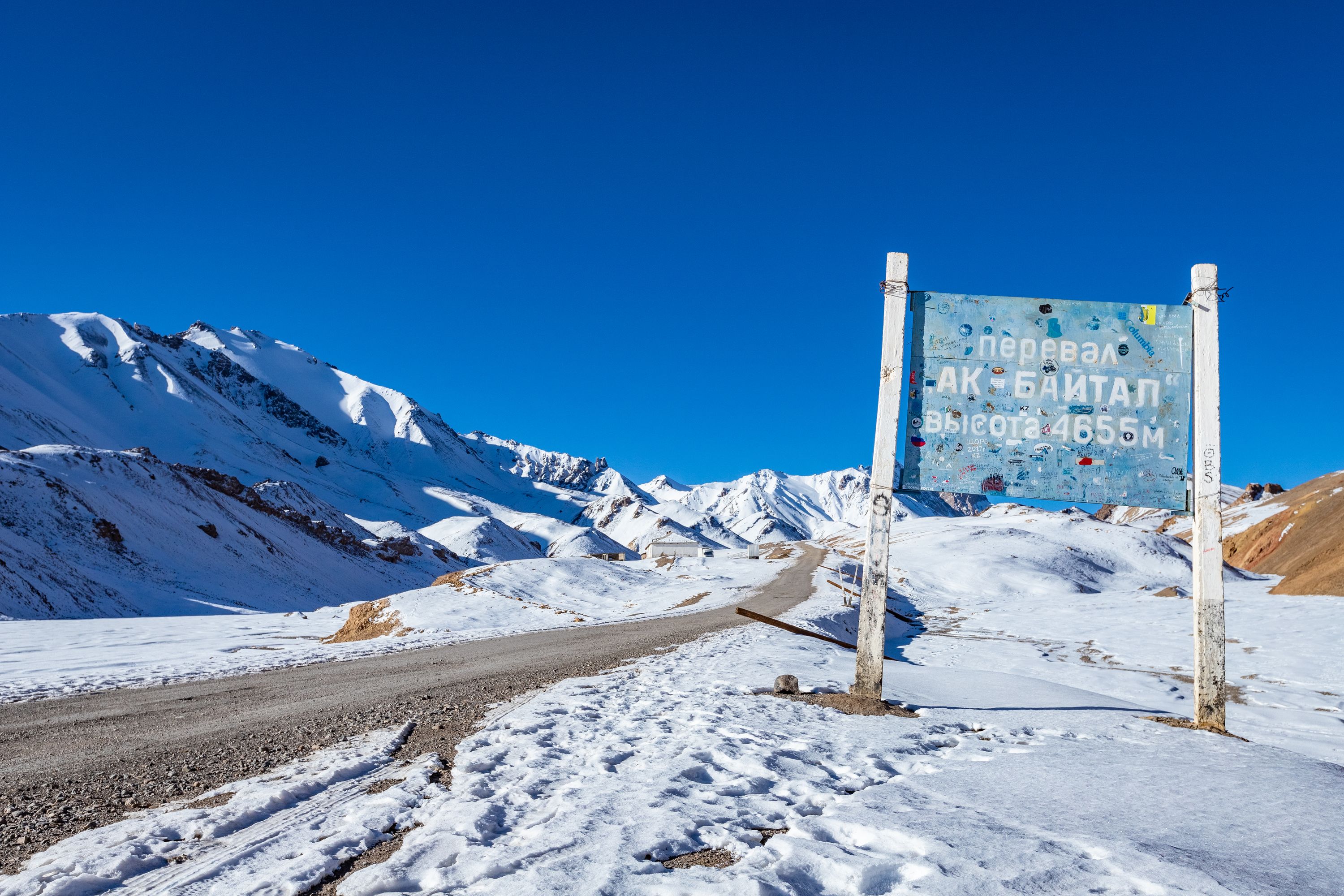
Travelling to the site
The site is located on Pamir Highway and can be reached by travelling from Khorog to Murghob and from there to the village of Qarakul. The lake can be reached from Osh via the Pamir Highway. Visitors can travel to the area from Bartang valley.
